Now tea plants are under dormancy as posted previously. In the resting period, tea plants are exposed under cold stress, which induces oxidative stress such as superoxide radical. Thus the fight against such oxidative stresses takes place in cells of tea plants in winter time.
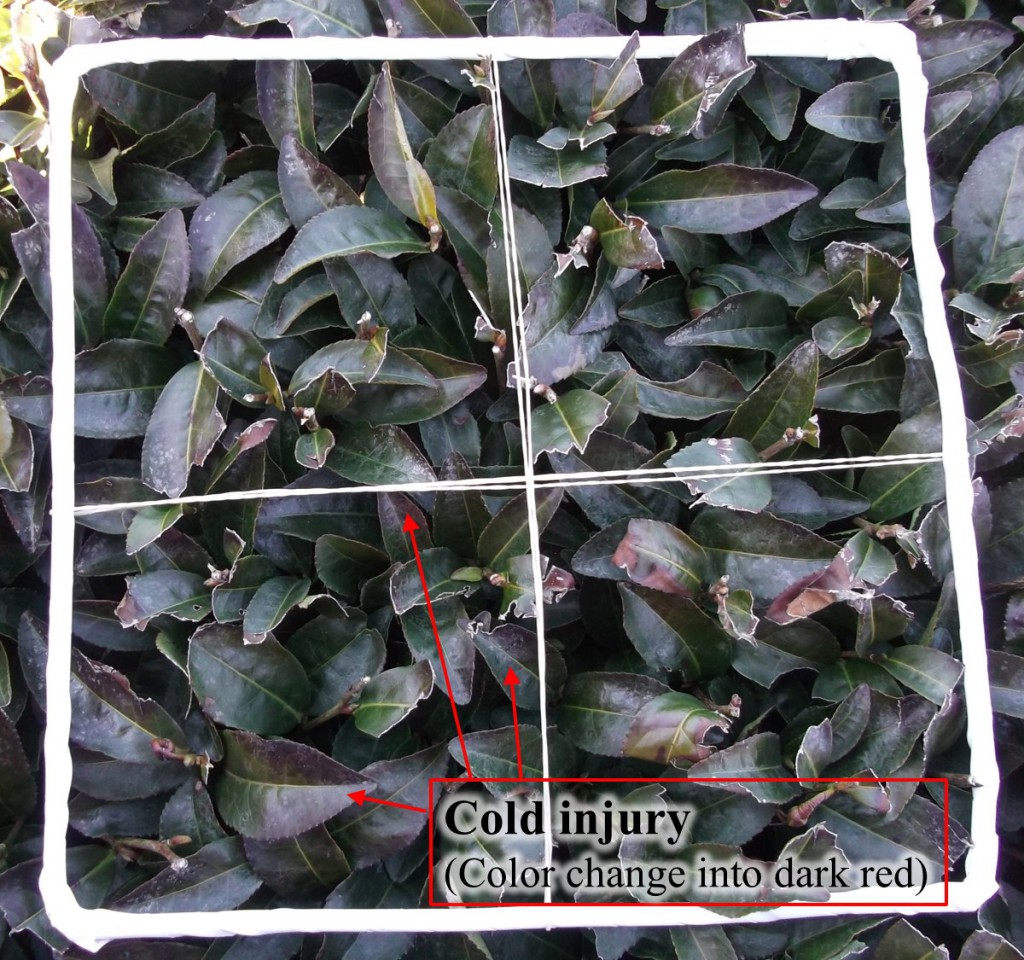
Cold injury of matured tea leaves because of cold stress.
In the dormancy period, various genes of tea plant express to protect itself from various stresses such as cold stress and subsequent oxidative stresses induced by some factors such as solar irradiation. In fact, the genes expression responded to abiotic or biotic stimulus or stress expressed is higher in dormancy period than active growth period, as reported by Wang et al. (2014)[329]. In the dormancy period, various enzymes are activated to defend cells of tea plant from oxidative stresses, such as superoxide dismutase, ascorbate peroxide and glutathione reductase.
The activity of these enzymes is different among cultivars, as reported by Vyas et al. (2007)[330]. First of all, superoxide radical accumulates highly in dormancy period as shown in Fig.1.
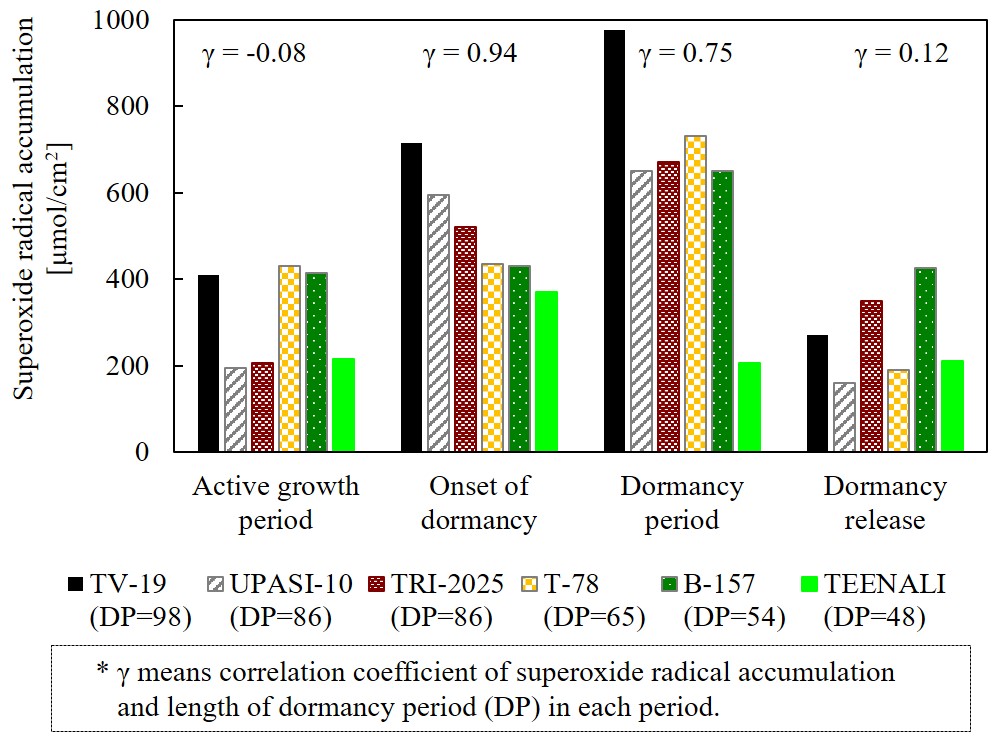
Fig.1 Superoxide radical accumulation of tea plants in each period. * This figure was depicted based on data reported by Vyas et al. (2007).
The degree of superoxide radical accumulation is different among cultivars. The cultivars of shorter dormancy period tend to avoid sever oxidative stress.
The clones having shorter dormancy period exhibited higher induction of antioxidative enzymes such as superoxide dismutase, ascorbate peroxide and glutathione reductase as shown in Fig.2 to Fig4, respectively.
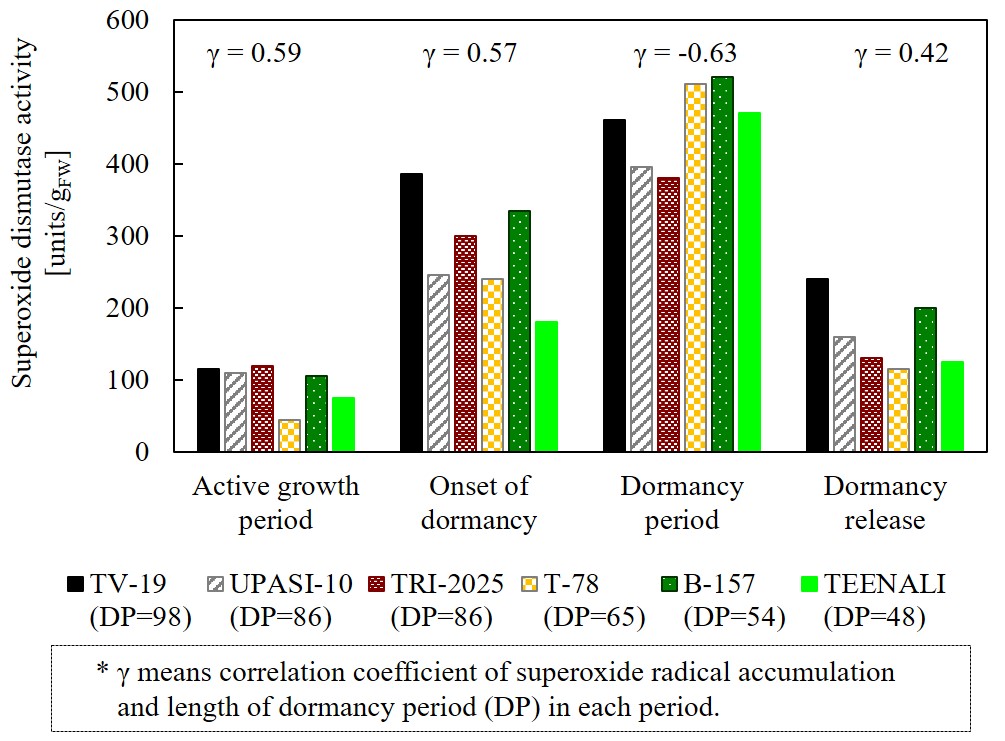
Fig.2 Superoxide dismutase activity of tea plant in each period. * This figure was depicted based on data reported by Vyas et al. (2007).
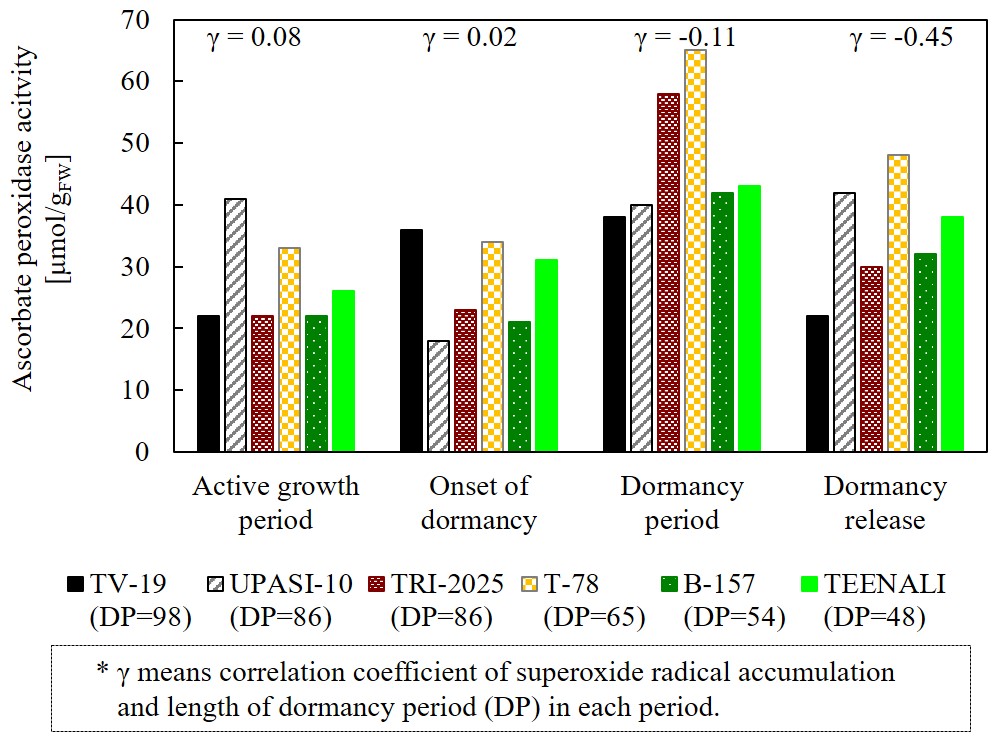
Fig.3 Ascorbate peroxide acitivity of tea plants in each period. * This figure was depicted based on data reported by Vyas et al. (2007).
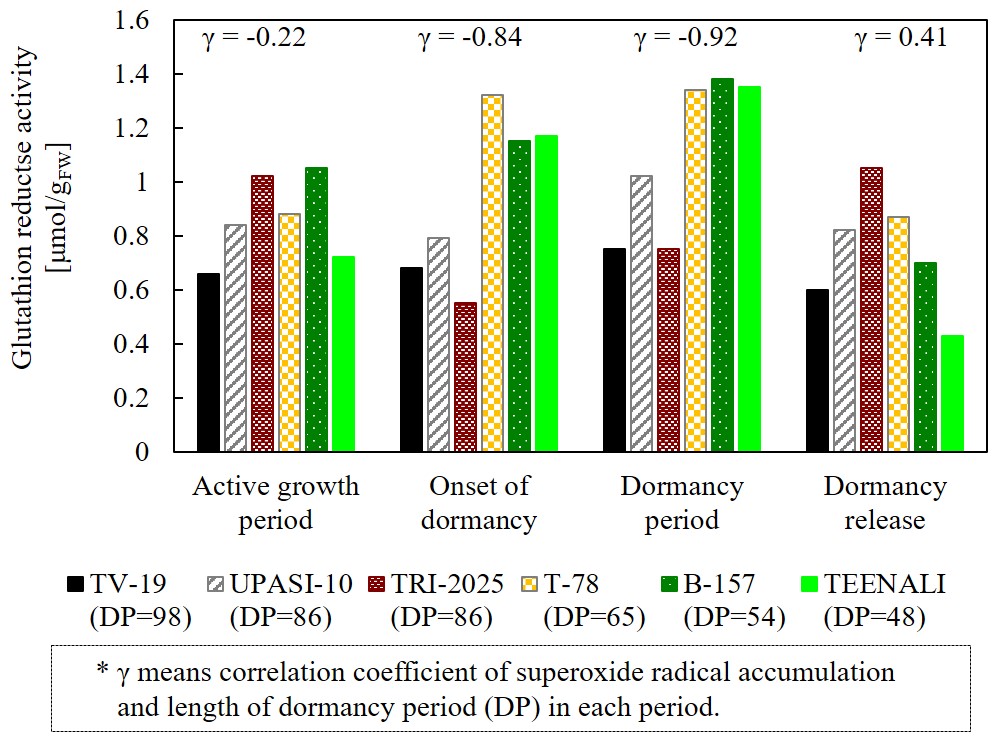
Fig.4 Glutathione reductase acitivity of tea plants in each period. * This figure was depicted based on data reported by Vyas et al. (2007).
Especially glutathione reductase activity is higher in the clones having shorter dormancy and its correlation coefficient is also higher.
Unfortunately this kind of study has not been conducted for Japanese species yet. It is speculated that some Japanese species possessing longer dormancy have high tolerance against cold stress, for example ‘Okumidori’ cultivar.
Breeding in terms of dormancy properties would be necessary for not only countermeasure for global warming but also basic improvement for yield and quality.
< References >
[329] Wang X., Hao X., Ma C. (2014) : Identification of differential gene expression profiles between winter dormant and sprouting axillary buds in tea plant (Camellia sinensis) by suppression subtractive hybridization, Tree Genetics & Genomes 10:1149-1159.
[330] Vyas D. Kumar S., Ahuja P.S. (2007) : Tea (Camellia sinensis) clones with shorter periods of winter dormancy exhibit lower accumulation of reactive oxygen species, Tree Physiology 27:1253-1259.
